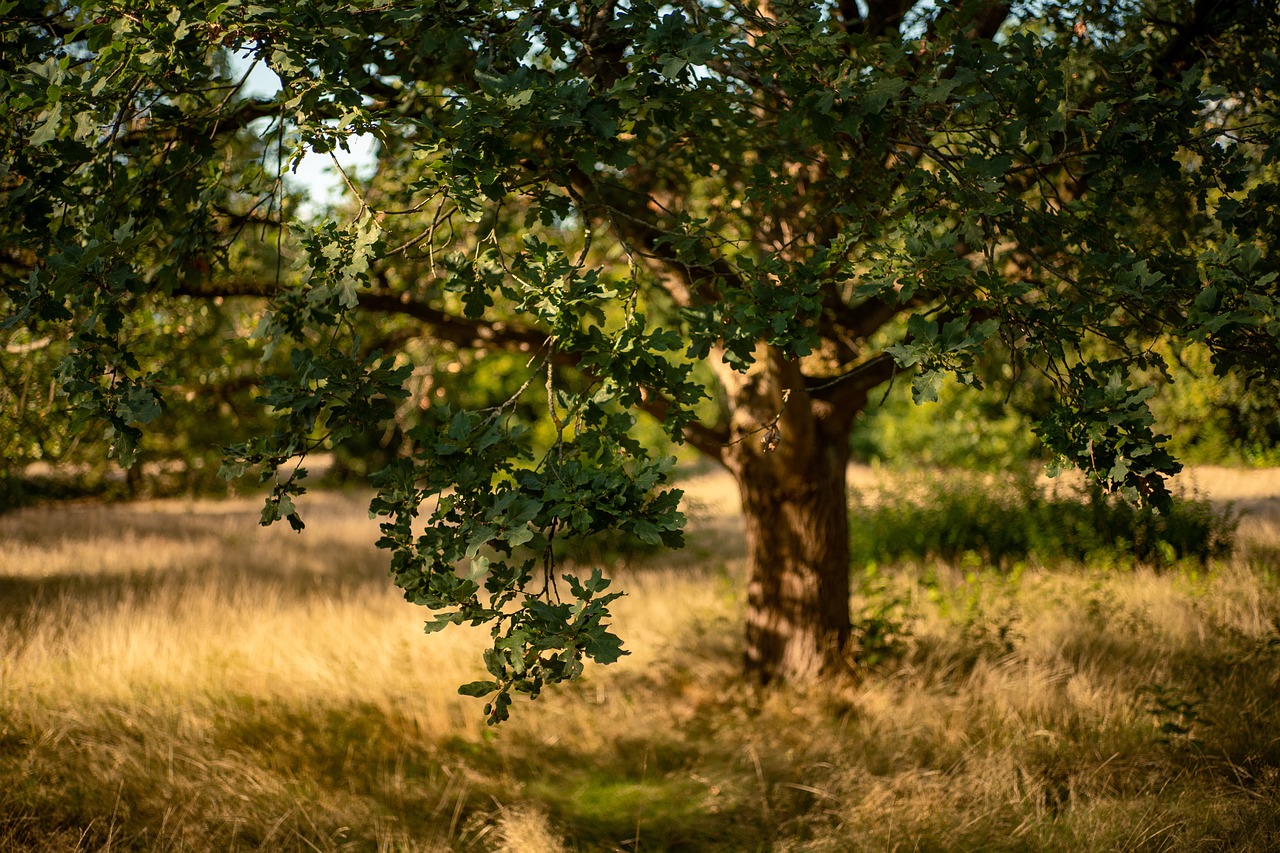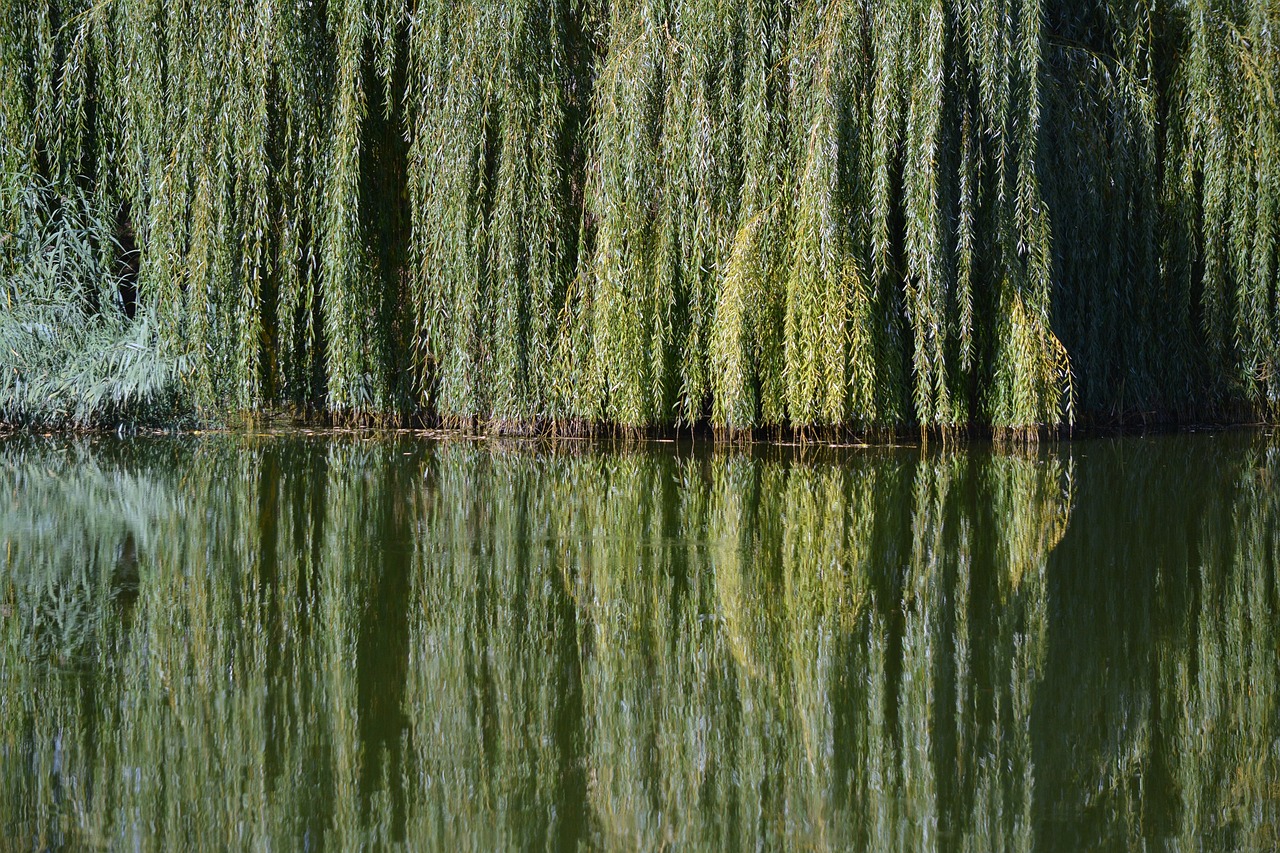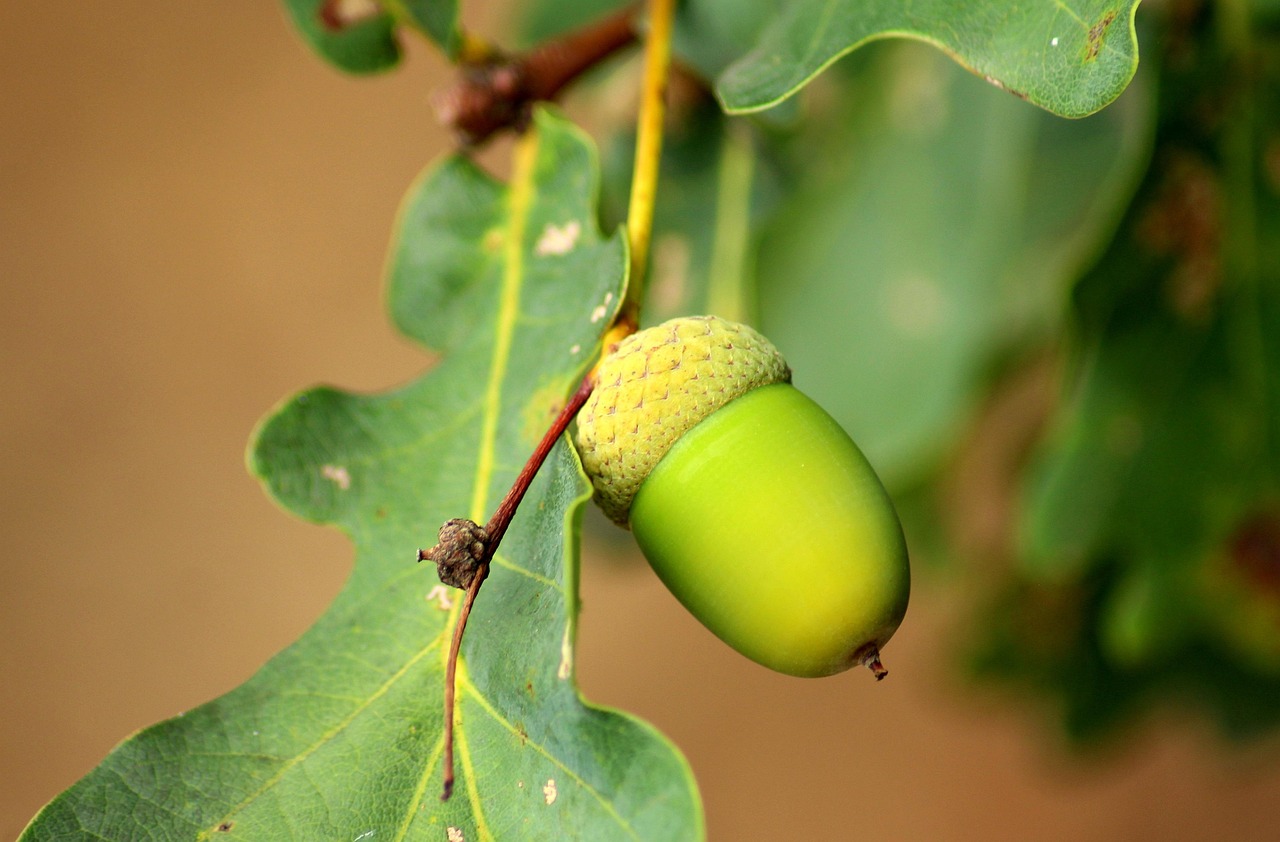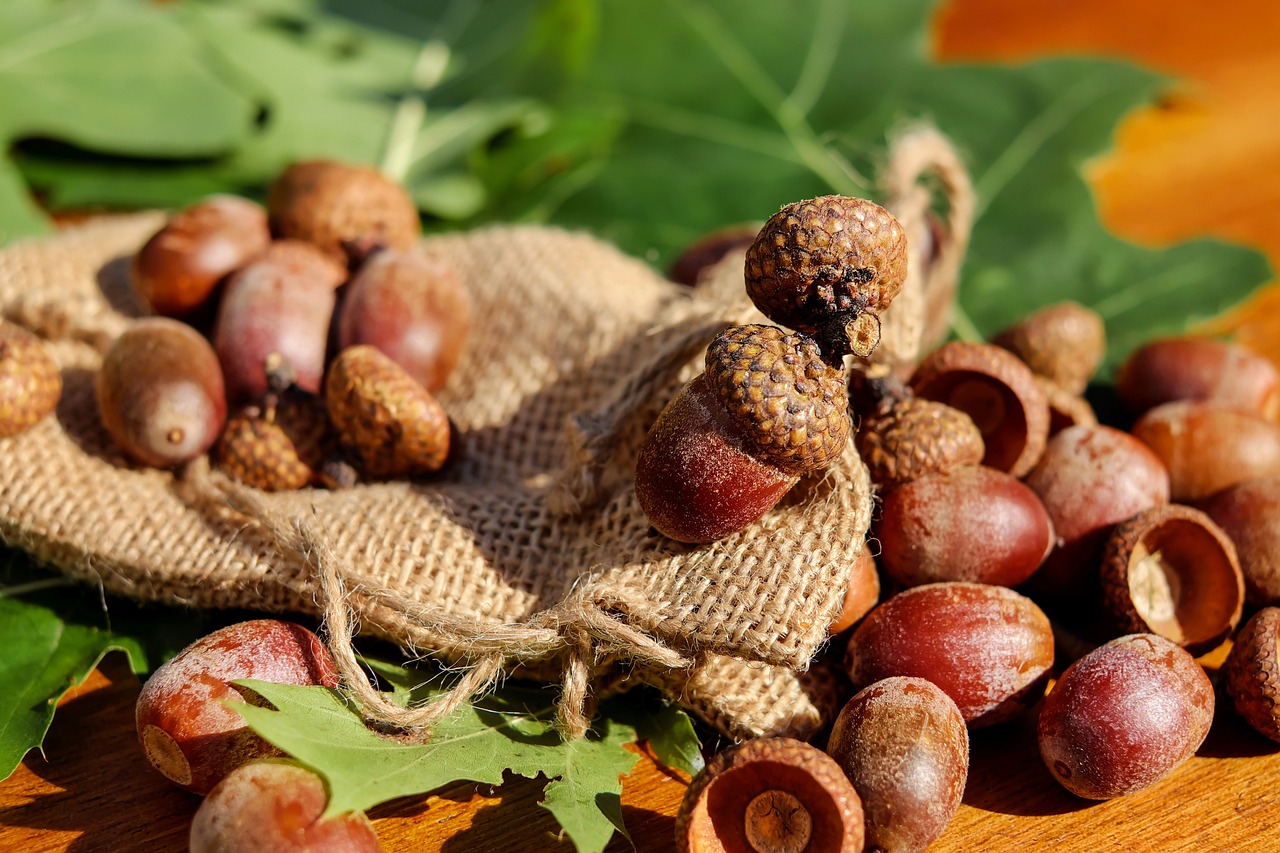The Willow Oak tree (Quercus phellos) is known for its rapid growth rate, typically reaching heights of 60 to 75 feet within 30 years. This fast growth allows it to provide ample shade cover, making it an excellent choice for landscaping and urban settings.
Willow Oaks are a popular choice for homeowners and landscapers alike due to their impressive size and beautiful foliage. These trees thrive in a variety of soil types and are adaptable to different climates. Their dense canopy provides excellent shade, making them ideal for parks, yards, and other outdoor spaces. Understanding the growth rate of the Willow Oak can help in planning your landscape effectively.

The growth rate of a Willow Oak can be influenced by several factors, including soil quality, water availability, and sunlight exposure. Generally, these trees grow about 2 to 3 feet per year under optimal conditions. They are particularly valued in areas where quick shade is desired, especially in urban environments where concrete and asphalt can create heat islands.
Growth Conditions for Willow Oak Trees
To achieve the best growth rates for Willow Oaks, it is important to consider their preferred growing conditions. Here are some key factors that contribute to their rapid growth:
- Soil Type: Willow Oaks prefer well-drained soils. They can tolerate clay, loam, and sandy soils but thrive best in loamy conditions.
- Sunlight: These trees require full sun for optimal growth. They thrive when they receive at least six hours of direct sunlight each day.
- Watering: Regular watering is essential, especially during the first few years after planting. Once established, they are somewhat drought-tolerant but still benefit from adequate moisture.
- Fertilization: Using a balanced fertilizer can promote faster growth. It is recommended to fertilize in early spring.
By ensuring these conditions are met, you can maximize the growth rate of your Willow Oak and enhance its ability to provide shade.

Growth Rate Comparison with Other Oak Species
When considering shade trees, it is beneficial to compare the growth rates of Willow Oaks with other common oak species. Below is a table that outlines the average growth rates of various oak trees:
| Tree Species | Average Height (Feet) | Growth Rate (Feet per Year) |
|---|---|---|
| Willow Oak | 60 – 75 | 2 – 3 |
| White Oak | 50 – 80 | 1 – 2 |
| Red Oak | 60 – 75 | 2 – 3 |
| Pin Oak | 50 – 70 | 1 – 2 |
| Swamp Oak | 50 – 70 | 1 – 2 |
This comparison illustrates that the Willow Oak offers a competitive and fast-growing option among oak trees. Its growth rate matches that of the Red Oak, while significantly outperforming other species like the White Oak and Pin Oak.
The rapid growth of Willow Oaks not only provides shade but also contributes to biodiversity. Their acorns serve as food for wildlife, including birds and mammals. Furthermore, these trees can improve air quality and reduce energy costs by cooling surrounding areas through transpiration.

In summary, the Willow Oak is an exceptional choice if you seek rapid growth and ample shade cover for your landscape. By understanding their specific needs and comparing them to other oak varieties, you can make informed decisions about planting and maintaining these majestic trees in your yard or community.
Planting and Care for Willow Oak Trees
Successfully growing Willow Oak trees requires careful planning and attention to their specific needs. Proper planting and care can enhance their growth rate and longevity. This section provides detailed guidelines on how to plant and care for Willow Oaks effectively.
Planting Guidelines
When planting a Willow Oak, timing and location are crucial. Here are essential steps to ensure a healthy start:
- Best Time to Plant: The ideal time to plant a Willow Oak is in the spring or fall. This allows the tree to establish its roots before the heat of summer or the cold of winter.
- Choosing the Right Location: Select a site that receives full sun and has ample space for the tree to grow. Avoid areas with heavy shade or competition from other large trees.
- Digging the Hole: Dig a hole that is twice as wide as the root ball but no deeper than the root ball itself. This encourages lateral root growth.
- Soil Preparation: If your soil is poor or compacted, consider mixing in compost or other organic matter to improve drainage and nutrient content.
- Watering After Planting: Water the tree thoroughly after planting to settle the soil around the roots. Continue regular watering during dry spells for the first couple of years.
Care and Maintenance
Once established, Willow Oaks require ongoing care to thrive. Proper maintenance includes watering, fertilization, and pruning.
Watering
While Willow Oaks can tolerate drought once mature, they benefit from regular watering during their early years. Here are some tips:

- Water deeply once a week during dry periods.
- Avoid overwatering, as this can lead to root rot.
- Mulch around the base of the tree to retain moisture and suppress weeds.
Fertilization
Fertilizing your Willow Oak can enhance its growth rate. Follow these guidelines:
- Type of Fertilizer: Use a balanced, slow-release fertilizer specifically formulated for trees.
- Application Timing: Fertilize in early spring just before new growth begins.
- Amount: Follow the manufacturer’s instructions for application rates based on the tree’s age and size.
Pruning
Pruning is essential for maintaining the shape and health of your Willow Oak. Consider the following:
- Timing: Prune in late winter or early spring before new growth starts.
- Removing Dead or Diseased Branches: Regularly inspect the tree for any dead or unhealthy branches and remove them promptly.
- Avoid Topping: Never top a tree; instead, prune selectively to maintain its natural shape.
Pest and Disease Management
Like all trees, Willow Oaks can be susceptible to pests and diseases. Being proactive can help maintain tree health. Here are common issues to watch for:
Pests
The following pests may affect Willow Oaks:
- Aphids: These small insects can cause leaf curling and yellowing. They can be controlled with insecticidal soap.
- Oak Leaf Caterpillars: These caterpillars feed on leaves, leading to defoliation. Handpicking or using Bacillus thuringiensis (Bt) can help control them.
- Scale Insects: These pests can weaken trees by sucking sap. Use horticultural oil for treatment.
Diseases
Diseases that may impact Willow Oaks include:
- Oak Wilt: A fungal disease that can kill oak trees. Early detection is crucial for control, as it spreads rapidly.
- Powdery Mildew: This fungal infection appears as white powdery spots on leaves. Improve air circulation around the tree to prevent it.
If you notice any signs of pests or diseases, consult with a local arborist or extension office for guidance on treatment options.
Caring for Willow Oak trees with attention to planting, maintenance, and pest management ensures their healthy growth, providing fast shade cover for years to come.
Benefits of Planting Willow Oak Trees
Willow Oak trees offer numerous benefits that extend beyond their aesthetic appeal. Their rapid growth and broad canopy make them particularly valuable in landscaping and urban environments. Understanding these advantages can help you appreciate the importance of incorporating Willow Oaks into your outdoor spaces.
Environmental Benefits
Willow Oaks contribute significantly to the environment. Here are some key environmental benefits:
- Shade Provision: The expansive canopy of Willow Oaks provides substantial shade, reducing temperatures in urban areas, which can mitigate the heat island effect.
- Air Quality Improvement: Trees absorb pollutants and emit oxygen, improving air quality. Willow Oaks play a vital role in this process by filtering harmful particles from the air.
- Soil Erosion Control: The extensive root system of Willow Oaks helps stabilize the soil, preventing erosion and promoting soil health.
- Biodiversity Support: Willow Oaks provide habitats for various wildlife species, including birds, insects, and small mammals, fostering biodiversity in the ecosystem.
Aesthetic and Property Value Enhancement
In addition to environmental benefits, Willow Oaks enhance the visual appeal of landscapes. Consider the following aspects:
- Beautiful Foliage: Willow Oaks have attractive, elongated leaves that turn vibrant colors in the fall, adding seasonal beauty to any landscape.
- Landscape Design Flexibility: These trees can be used in various landscape designs, whether as a focal point or as part of a larger grouping of trees.
- Property Value Increase: Mature trees like Willow Oaks can increase property values by enhancing curb appeal and creating desirable outdoor living spaces.
Willow Oak Tree Uses
The versatility of Willow Oaks makes them suitable for a variety of uses in both residential and commercial settings. Here are some common applications:
Urban Landscaping
Willow Oaks are often planted in urban areas due to their adaptability and rapid growth. Their use in urban landscaping includes:
- Parks and Recreation Areas: Their large canopy provides shade for picnic areas, playgrounds, and walking trails.
- Street Trees: Planting Willow Oaks along streets can enhance the aesthetic appeal of neighborhoods while providing shade for pedestrians.
- Parking Lots: Willow Oaks can be strategically placed in parking lots to create shaded areas for vehicles, reducing the need for air conditioning.
Residential Applications
Homeowners can enjoy various benefits by planting Willow Oaks in their yards:
- Shade for Homes: Planting Willow Oaks near homes can reduce cooling costs in the summer by blocking sunlight from hitting roofs and windows.
- Outdoor Living Spaces: The shade provided by these trees makes outdoor living areas more comfortable and enjoyable.
- Buffer against Wind: Strategically placed Willow Oaks can act as windbreaks, protecting homes from harsh winds.
Cultural Significance and Symbolism
The cultural significance of trees often goes beyond their physical presence. Willow Oaks hold various meanings in different cultures:
- Strength and Resilience: The robust nature of the Willow Oak symbolizes strength and resilience due to its ability to thrive in various conditions.
- Connection to Nature: In many cultures, oak trees represent a deep connection to nature and the environment, symbolizing longevity and stability.
- Cultural Heritage: In some regions, oak trees are integral to local folklore and traditions, often associated with stories of wisdom and protection.
This cultural significance adds an extra layer of appreciation for planting Willow Oaks beyond their practical benefits. By understanding both their environmental contributions and cultural values, you can see why they are a favored choice for many landscapes.
Sustainability Considerations
As environmental concerns grow, the choice of tree species becomes increasingly important. Here are some sustainability factors related to planting Willow Oaks:
- Carbon Sequestration: Like all trees, Willow Oaks absorb carbon dioxide from the atmosphere, helping to mitigate climate change impacts.
- Native Species Benefits: In regions where they are native, Willow Oaks support local ecosystems and wildlife better than non-native species.
- Drought Tolerance: Once established, Willow Oaks exhibit some drought resistance, making them suitable for areas with variable precipitation.
By choosing Willow Oaks for planting projects, you contribute positively to both local ecosystems and broader environmental goals. Their numerous benefits make them an excellent choice for anyone looking to enhance their landscape while supporting sustainability efforts.
Future of Willow Oak Trees in Urban Landscapes
As urban areas continue to expand, the need for sustainable landscaping solutions becomes increasingly critical. Willow Oaks present a viable option for addressing these urban challenges. Their rapid growth rate, adaptability to various soil types, and ability to provide significant shade make them particularly suitable for urban environments.
Urban planners and landscapers are recognizing the importance of incorporating trees into city designs. Willow Oaks can be strategically planted in public parks, along streets, and in residential areas to enhance the overall quality of life. The shade they provide can lower temperatures in concrete-heavy environments, thereby reducing energy costs for air conditioning during hot months.
Long-Term Care and Community Involvement
For Willow Oaks to thrive in urban settings, long-term care is essential. Community involvement in tree planting and maintenance can foster a sense of ownership and responsibility. Here are some ways communities can engage:
- Tree Planting Events: Organizing community events to plant Willow Oaks can enhance local green spaces while promoting environmental awareness.
- Educational Workshops: Hosting workshops on the benefits of trees and proper care techniques can empower residents to take part in tree maintenance.
- Volunteer Programs: Offering opportunities for residents to volunteer in caring for local trees fosters community spirit and ensures their health.
Research and Innovations
The future of Willow Oak trees also lies in ongoing research and innovations. Arborists and environmental scientists are studying various factors that affect tree growth and health. Some areas of focus include:
- Climate Resilience: Research is being conducted on how Willow Oaks adapt to changing climates, including heat tolerance and resistance to pests and diseases.
- Soil Health: Studies on the impact of soil composition on tree growth can lead to better planting strategies that enhance overall health and sustainability.
- Urban Heat Mitigation: Ongoing investigations into how trees like the Willow Oak can reduce urban heat island effects will help inform future city planning.
Final Thoughts
Willow Oak trees represent an excellent choice for anyone looking to enhance their landscape with fast-growing, resilient, and beneficial shade cover. Their remarkable growth rate, coupled with their environmental contributions, makes them an invaluable asset in both urban and rural settings.
By understanding the specific needs of Willow Oaks regarding soil, water, and light, homeowners and landscapers can maximize their growth potential and ensure long-term health. The numerous benefits they provide—ranging from improved air quality to habitat support for wildlife—underscore the importance of planting these trees in our communities.
As we face increasing environmental challenges, incorporating native species like the Willow Oak into our landscapes offers a sustainable solution. Their role in carbon sequestration, erosion control, and biodiversity promotion cannot be overstated. Furthermore, through community involvement and ongoing research, we can ensure that these magnificent trees continue to thrive for generations to come.
In summary, planting Willow Oaks not only enhances the beauty of our surroundings but also contributes positively to our ecosystems and urban environments. By embracing these trees, we support sustainable practices that benefit both people and nature alike.
